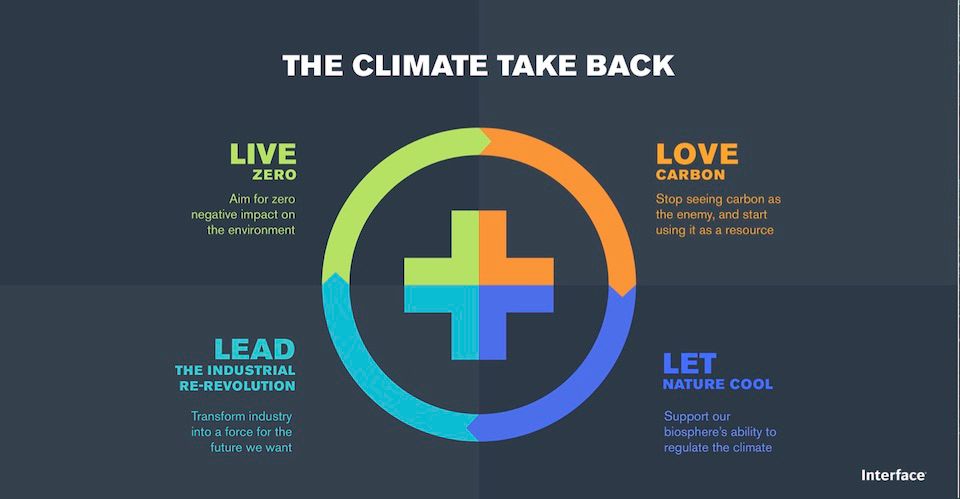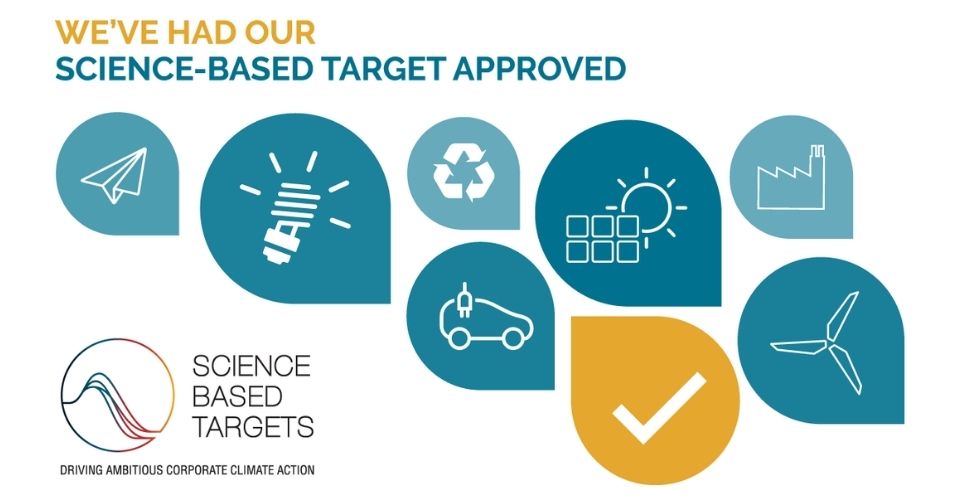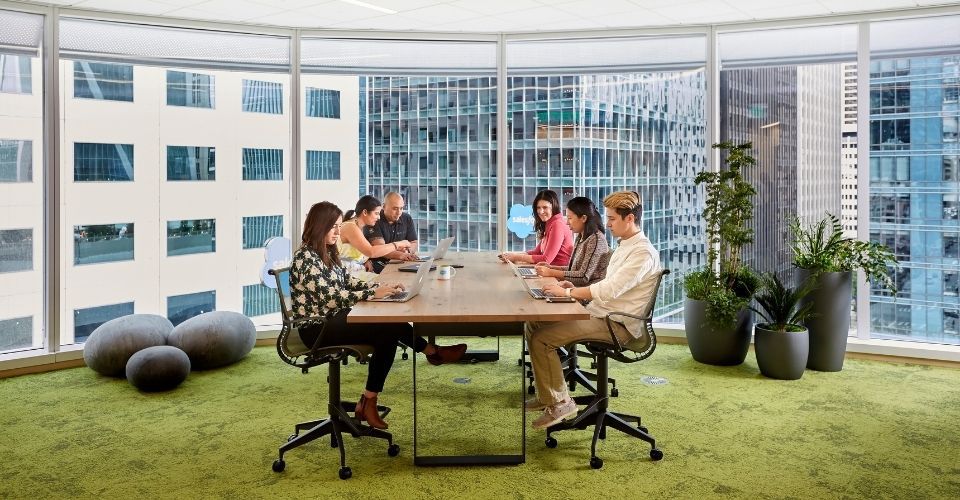This year, to commemorate Earth Month, we are focused on sharing best practices, lessons learned and what’s next on our Climate Take Back™ journey to reverse global warming. By sharing our goal to become a carbon negative enterprise by 2040, we hope to encourage others to rethink their processes and products to create a positive impact on the world.
Our Climate Take Back mission aims to create a climate fit for life by focusing efforts on four key areas – Live Zero, Love Carbon, Let Nature Cool and Lead the Industrial Re-Revolution. Throughout April, we’ll be digging into each area to highlight specific strategies that we use to run our business in a way that is restorative to the planet.
We’re kicking off the series with a deeper look at how we Live Zero at Interface and work with partners, suppliers, and customers to reduce our collective carbon impact.

Climate Take Back is our mission to reverse global warming.
What “Live Zero” Means to Interface
According to climate scientists, global warming must be kept at 1.5 degrees Celsius or below to maintain a livable environment and avoid the worst of climate change. To do this, we must radically decarbonize our current systems. Companies must go beyond simply reducing their carbon footprint – they must aim for zero.
Live Zero is conducting business in a way that gives back what it takes from the Earth; in other words, to have no negative impact on the environment.
Mission Zero® was our journey to transform our business to have zero negative impact on the planet by 2020. From the time we started this journey until we declared success in November 2019 ahead of our original target, we reduced our absolute greenhouse gas emissions by 95%.
Today, we remain focused on developing processes and products that create a positive impact on the world, and we are committed to reducing our Scope 1, 2, and the most significant part of our Scope 3 emissions 50% by 2030, a goal validated as science-based by the Science Based Targets initiative (SBTi).
A key contributor to Mission Zero success and our Climate Take Back efforts is our work to understand, measure, and reduce our Scope 3 emissions through strategic partnerships and programs.

SBTI approved our science-based target in September 2021.
Importance of Scope 3
Measuring and reporting Scope 3 emissions is critical for companies to reduce the carbon impact of their operations. Most companies remain focused on Scopes 1 and 2, which are directly within a company’s control; however, understanding and tracking Scope 3 is essential to set goals that are in line with what science requires to keep global temperatures at safe levels.
Scope 3 emissions occur as indirect emissions from the company’s value chain, which includes supply chain operations and the use of the product or service. This emissions type is especially critical for manufacturers as they evaluate the impact of their supply chain. In fact, according to data from CDP, “supply chain emissions are on average 11.4x higher than operational emissions.” This underscores how critical it is for organizations to include Scope 3 emissions in their carbon accounting to accurately set reduction goals.
A company can’t Live Zero unless it includes all greenhouse gas emission types within its efforts. Interface has shared our Scope 3 emissions publicly since they were first verified in 2019, and we continue to take steps to improve our emissions data. In fact, our progress on Scope 3 emissions can be found in our annual Climate Disclosure.

Interface shares our annual greenhouse gas emissions, including our Scope 3 emissions.
The Power of Partners for Decarbonization
At Interface, we’re big believers in the power of engaging suppliers and other leading companies to reduce our carbon impact, specifically as it relates to Scope 3 emissions.
For example, as part of Mission Zero, we asked suppliers to partner with us to create sustainable solutions. This included encouraging nylon manufacturer Aquafil® to make nylon with recycled materials to reduce the carbon footprint of our products. Aquafil subsequently went on to sell the recycled-content nylon to our competitors and to other industries, helping us create a broader impact outside of Interface.
Today, 50% of the materials in the flooring products we sell are from recycled or bio-based sources. And, we have reduced our cradle-to-gate carpet tile carbon footprint, which includes raw material extraction through manufacturing, by 76% since 1996. Engaging with our suppliers has been critical to reducing our Scope 3 carbon emissions and to establishing a circular economy model for our products.
By working with our whole value chain, we changed our raw materials and put the necessary technology and systems in place to use recycled materials. This led to the creation of our ReEntry® Reclamation and Recycling program, which keeps flooring out of landfills and reuses it for future products. Through this program, we can reclaim all Interface carpet tile and Sound Choice™ LVT products, diverting millions of pounds of waste from landfills each year. As of 2021, Interface has reduced waste sent to landfills from our manufacturing sites by 85% since 1996.

© Christopher Payne /Esto
How to Further Engage Suppliers
Another way to engage suppliers in carbon reduction efforts is to demonstrate demand for more sustainable products and processes. For example, Salesforce introduced its Sustainability Exhibit, which requires company vendors and suppliers to meet specific climate commitments, including committing to their own science-based targets (SBTs) by 2024. Salesforce evaluated the environmental impact of Interface’s flooring products and found that our efforts aligned with its mission to create more sustainable built environments. (Read more about this in our recent case study.)
“We’ve already seen a 20% reduction [in embodied carbon] from our baseline,” said Amanda von Almen, Salesforce Head of Sustainable Built Environment. “The very low embodied carbon value of Interface carpet is a significant contributing factor to that.”

Salesforce’s Global Design Standards consider the carbon footprint of its design materials.
Interface Lives Zero
Establishing strategic partnerships and engaging others in our Mission Zero and Climate Take Back journeys are just some of the ways we’re making significant strides to Live Zero.
Stay tuned for the rest of our Earth Month series to learn about the other parts of Climate Take Back and how they take shape throughout Interface.